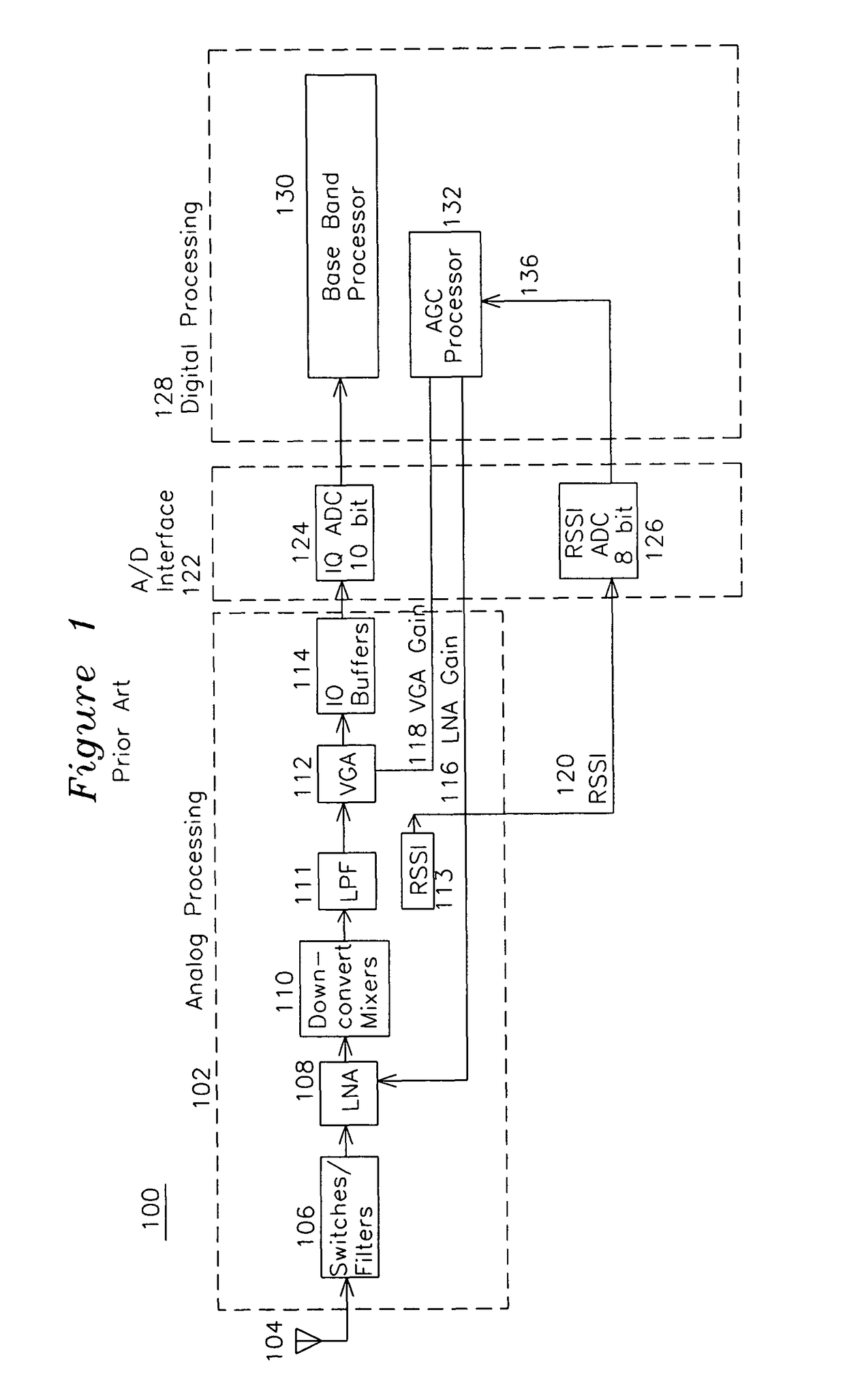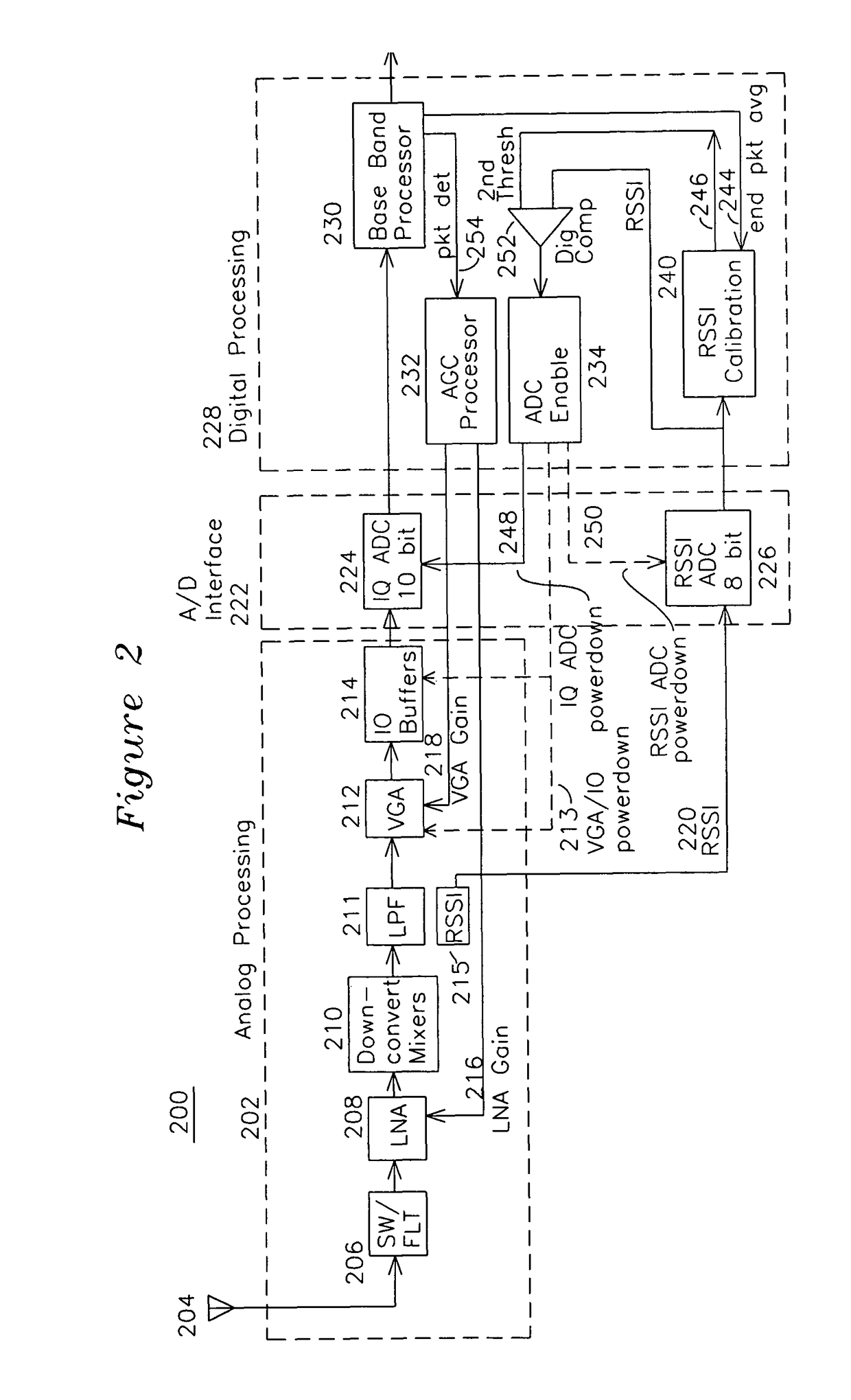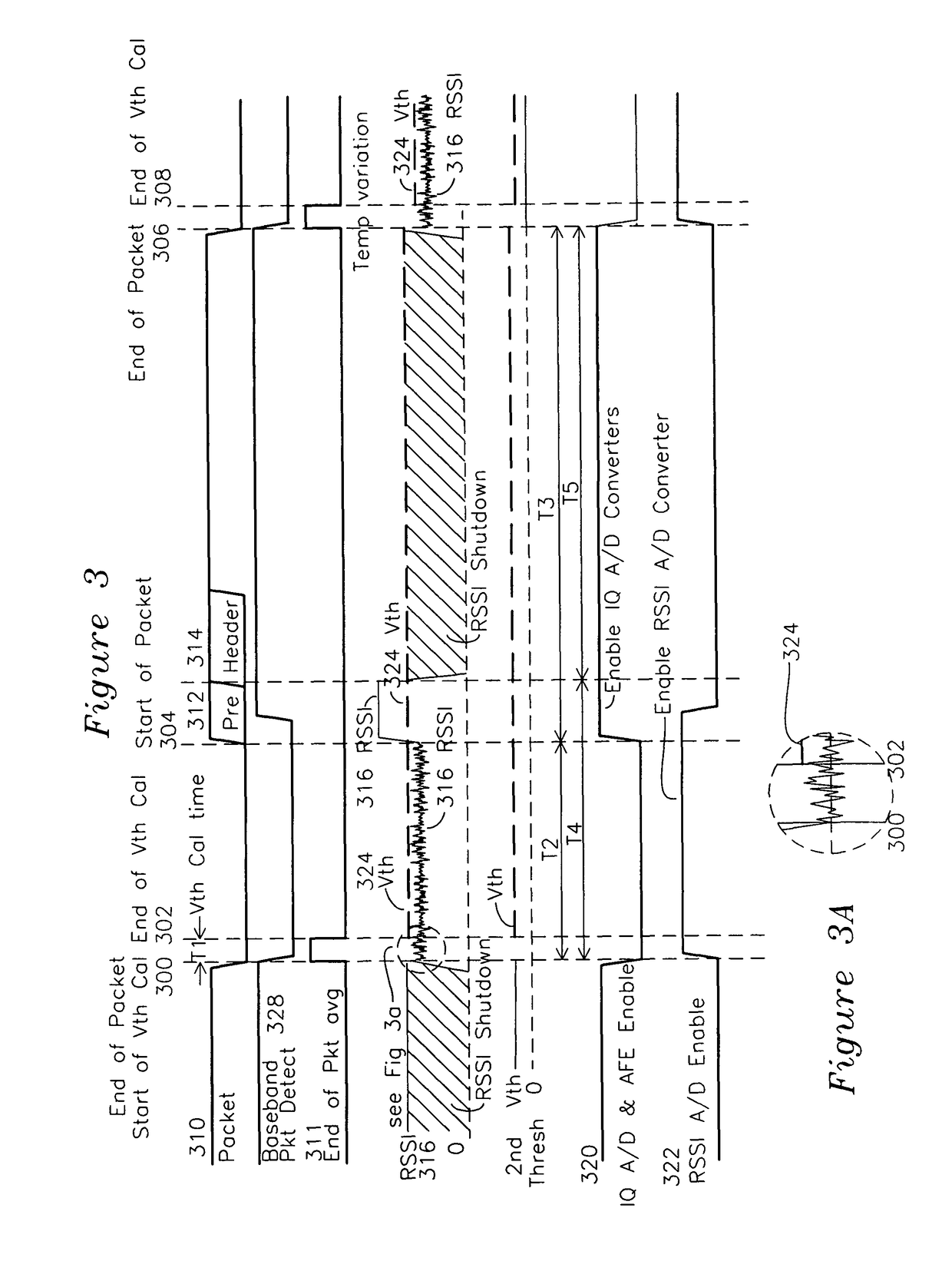RSSI-based powerdown apparatus and method for a wireless communications system
a wireless communication system and powerdown technology, applied in the field of wireless communication equipment, can solve the problems of high current consumption of analog components for optimizing high speed performance, limited power consumption opportunities for each section of prior art receivers b>100/b>, and high clock speed, so as to reduce the power consumption of an rssi adc converter and reduce the clock rate of iq adc
- Summary
- Abstract
- Description
- Claims
- Application Information
AI Technical Summary
Benefits of technology
Problems solved by technology
Method used
Image
Examples
second embodiment
[0034]Several power saving opportunities are presented by the configuration of FIG. 2. The RSSI signal 220 can be used with a baseband end of packet averaging signal 244 to generate a first threshold which is increased to a second threshold for early packet detection preceding the baseband processor asserting packet detect 254. The interval from RSSI crossing the second threshold through end of packet may be used to enable the IQ ADC 224. FIG. 3 shows the waveforms for FIG. 2, including end-of-packet average waveform 311, corresponding to signal 244 of FIG. 2 which is generated by the baseband processor 230. The RSSI signal 220 associated with the received packet 310 is shown as waveform 316. When the baseband processor deasserts the packet detect signal 254 (waveform 328), the LNA and VGA are set to maximum gain and the RSSI noise-dominated signal is sampled for an interval shown as Vth Cal time T1 from 300 to 302 (also shown in detail FIG. 3A), and this computation results in the ...
embodiment 400
[0035]FIG. 4A shows an alternative embodiment 400 whereby the comparison operation is performed by an analog comparator 452 rather than the digital comparator 252 of FIG. 2. For convenience in understanding the invention, analog functions are shown within boundary 410, A / D and D / A conversions are shown in conversion boundary 412, and digital processing is shown in boundary 414. The RSSI signal 220 is sampled by RSSI ADC 458, which is enabled and active only during the end of packet average interval of signal 244, and is powered down or in standby at other times. During the end of packet noise averaging interval, RSSI calibration 462 is performed, and the first threshold average noise level is generated based on digitized samples from 458 of RSSI 220 over a time interval T1, as before. The second threshold is generated 462 by adding an increment of 1 to 5 dB to the first threshold level, as required to minimize false triggering of the IQ ADC from noise signals, as previously describe...
PUM
 Login to View More
Login to View More Abstract
Description
Claims
Application Information
 Login to View More
Login to View More - R&D
- Intellectual Property
- Life Sciences
- Materials
- Tech Scout
- Unparalleled Data Quality
- Higher Quality Content
- 60% Fewer Hallucinations
Browse by: Latest US Patents, China's latest patents, Technical Efficacy Thesaurus, Application Domain, Technology Topic, Popular Technical Reports.
© 2025 PatSnap. All rights reserved.Legal|Privacy policy|Modern Slavery Act Transparency Statement|Sitemap|About US| Contact US: help@patsnap.com



